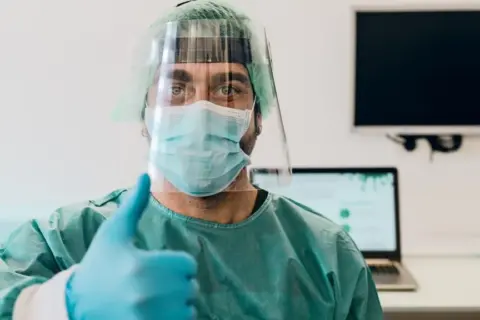Dental Emergency: The Most Common Types
Dental Emergency
The dental emergency is a fairly common occurrence which most frequently occurs before the age of 19. In baby teeth, trauma generally takes the form of luxations (tooth dislodgement). Whereas in the permanent dentition (adult teeth), tooth or crown fractures are most common. The most important consideration for treatment in children is the effect on the underlying adult tooth. The way the adult tooth erupts or looks can be changed. Treatment in permanent teeth centers around saving the tooth and assessing the condition of the nerve and root development status. Special care is taken with immature teeth (newly erupted teeth), as preserving the nerve can save the tooth. The types of tooth trauma are fractures, luxations (dislodgement of the tooth from its socket), and avulsion (complete removal of tooth from its socket). Injuries can also occur to soft tissue and bone, which will not be covered in this article.
Fractures
If possible, you should try to keep the broken fragment as it can occasionally be re-bonded. Treatment of enamel-only fractures is the same in adult and primary (baby) teeth. They can either be polished, a filling placed, or the broken fragment can be bonded back on. For fractures into the second layer of the tooth, a sedative type filling can be placed. Fractures into the pulp (nerve) are treated based on tooth type. Permanent teeth generally require root canal. Immature teeth can be treated with a sedative filling. Alternatively, a partial pulpotomy (partial root canal) can be done to try and preserve the nerve. This can allow the root of the tooth to continue to fully form. Crown-root fractures are treated based on the depth of fracture. If possible the dentist will try and remove the loose fragment only and preserve the tooth. Dental extraction is required if severe.
Primary teeth are generally treated the same but are heavily based on ability to cope. If the fracture is into the nerve, a partial pulpotomy (baby root canal) can be attempted. If this is not possible, extraction is the alternative. With root fractures where the crown segment is not loose the tooth can be left as is. If it is loose, the top portion is removed and the root is left behind to resorb.
Luxations
Dislodgement of the tooth from its socket is classified based on the direction of displacement. Extrusions are when the tooth comes straight out, lateral luxations are to the side, and intrusion is straight in. In adult teeth the treatment involves gently repositioning the tooth and stabilizing it with a flexible splint for 2-4 weeks. After 7-10 days, we assess the nerve status, but root canal therapy is generally required. With minor intrusion, the tooth can be left alone for 2-4 weeks to see if it will erupt. If the intrusion is more severe, repositioning is necessary or the tooth can fuse with the bone. The treatment in primary teeth is generally extraction. If mild, the tooth can be allowed to reposition on its own.
Avulsions
A Dental Emergency in Need of a Quick Response
Complete removal of the tooth from its socket is the most time-sensitive with regards to treatment. The steps taken immediately following injury determine the outcome. They are based on how long the tooth was out of the socket and how long it was kept dry.
Always handle the tooth by the crown and avoid touching the root. If the tooth comes out and stays in the oral cavity, it can be replanted immediately. If the tooth is dirty, wash it under cold running water and ensure debris removal. It can then be replanting if you are comfortable doing so. Bite on cotton/cloth to keep it position. If replanting the tooth is not possible, the tooth should be placed in a storage solution as soon as possible. Adequate options include milk, salt water, or the patient’s own saliva. With all of the above, seek emergency dental treatment immediately. The dentist will ensure the tooth has been replanted correctly. A flexible splint will be placed for 2 weeks, and root canal therapy may be required.
It is essential that the tooth be replanted or placed in a storage liquid within 60 minutes. After this time replantation is referred to as delayed replantation, and can result in fusion of the tooth to the bone (ankylosis). In a developing child/teenager, this can result in a tooth that appears sunken in.
In-Home Care & Prevention
- Avoid contact sports
- Soft diet for 2 weeks
- Brush with an extra soft toothbrush after meals
- Saline or chlorhexidine mouth rinse twice daily for 1 week.
An ounce of prevention is worth a pound of cure. Custom-fit mouth guards are the best way to prevent traumatic dental injuries. We fabricate them for as little as $30. In some sports like hockey, full-face cages as well as mouth guards are recommended. Contact us now to book an appointment.

